Burn called damage to the integrity of the skin or mucous membranes under the influence of boiling water, open fire, hot iron, chemicals or boiling oil. Housewives often get burned by steam in the kitchen. If the burn surface is more than 15% of the area of the entire body, then the person is indicated for urgent hospitalization due to the risk of developing a burn disease. If there are first and second degree burns, they can be treated at home. But at the same time, everyone should know how to provide first aid, how to treat a burn at home, and what absolutely should not be done.
If the treatment of thermal injuries is carried out correctly, then there is a high probability that the consequences will be minimal. You can mainly get burned by steam from an iron, boiling water and boiling oil. Treatment of thermal injuries in children should be carried out taking into account the fact that their skin is thinner and more susceptible to the negative effects of high temperatures. Children most often experience burns from boiling water and hot irons. This happens due to the child's excessive curiosity. Housewives often get burned by hot steam. Finger injuries are also common due to hot dishes.
Degrees of burn injuries:
- signs of the first degree: redness of the skin, slight swelling;
- signs of the second degree: the skin becomes covered with blisters filled with liquid, burn wounds often become infected, so competent first aid is very important;
- signs of the third degree: the appearance of necrotic areas of the skin, requiring hospitalization;
- signs of the fourth degree: the most severe, leads to necrosis of the skin, muscles, bones.
First aid for burns
Mostly at home we get household burns from boiling water, iron or boiling oil. Less commonly, this is a chemical burn, but it requires special care. First aid for chemical burns is provided independently, if you know exactly how you can neutralize the substance that gets on the skin. With thermal injuries, everything is much simpler. Clean hands are a prerequisite when providing assistance. Since skin damage occurs, this can become an entry point for infection. Pour cold water over the burn site for 15 minutes. This will help relieve pain and reduce the temperature of the wounds. The ideal option would be to treat the damaged area with a weak solution of manganese. If a thermal burn requires medical attention, call an ambulance and do not try to numb the injury yourself until it arrives. Apply a sterile bandage to the affected area.
Incorrect actions in case of burns
When thermal injuries occur in children, loved ones begin to panic. This leads to the child receiving incorrect first aid. If a woman scalds her hand with steam or boiling water, the first thing she does is lubricate the skin with oil. Enormous harm can be caused if you anoint the burn site with fat. Because it covers the skin with a film, air access is limited and, as a result, the healing of burn wounds takes a very long time. First aid using ice may cause tissue frostbite. It is forbidden to treat the affected area with products that contain alcohol. Under no circumstances should you pop blisters yourself.
Treating burns with medications
In the first few hours after injury, a spray will help relieve pain. Panthenol. It is involved in skin regeneration processes. The drug can be used to treat both adults and children. You can treat the affected area in the future using the drug Olazol. It ideally helps against injury from steam or boiling water. Iron burns can be treated with the drug Betadine. The ointment prevents infection of wounds.
Any burn is always pain. And it doesn’t matter if it’s an injury to an arm, a leg, or just a finger. There are no painless injuries. Ointment will help relieve pain quickly Fastin. Treatment with the drug can be continued until the wounds are completely healed. The ointment can be used as an independent treatment, or you can additionally apply dressings with Methyluracil. It helps restore skin cells well. The ointment makes it possible to cure thermal injury quite quickly. The drug will also minimize residual effects. For example, there will be no trace left on the skin from the iron.
Another drug that helps in cell regeneration is Solcoseryl. It restores the outer layer of skin and promotes faster healing of wounds.
When the blisters burst, every effort must be made to prevent the wounds from becoming infected. Ointment will help with this Inflarax. The drug will also help to quickly relieve pain, thanks to the anesthetic included in the composition. Children cannot be treated with this ointment. Ointment can be used as a wound healing agent for a child Bepanten plus. Indicated for children from one year of age.
For minor thermal injuries, the affected areas can be smeared Sea buckthorn oil. Burns should be treated with caution at the stage of fresh wounds with this remedy.
It is possible to treat burn injuries in children balm Rescuer. It can be used early in the process if the injury is minor, such as a small burn to the hand or finger.
Treatment with folk remedies
Folk remedies for burns can be used to treat first and second degree injuries. Any folk recipe is aimed at treating the consequences of burns. It is not recommended to use on open wounds. You can make ointments at home. Treatment should be carried out only with freshly prepared products.
- Take one yolk, mix with one spoon of refined sunflower oil and two spoons of sour cream. Apply to the affected area once a day and apply a bandage. You can leave it on for about a day. You can treat burns with this remedy until complete healing.
- Another ointment will help with injuries caused by boiling water or an iron. Beat two eggs with 100 g of butter. Apply to the affected area twice a day. Leave the bandage on for two hours. Treat first degree injuries without damaging the skin.
- You can quickly relieve pain if you make lotions from a herbal decoction, which includes rose hips, coltsfoot and oak bark. Make a decoction, cool and apply gauze moistened with the product to the sore spot. Apply lotions every twenty minutes for an hour.
- In case of a minor burn with steam or boiling water, compresses made from grated potatoes will help relieve the pain. A few hours after the injury, apply potato pulp to the affected area under a bandage. Change every 20 minutes.
- You can treat burns with steam or boiling water using aloe. To do this, take a fleshy leaf of the plant, wash it well, cut it into two parts and apply the pulp to the affected area.
- Make an ointment from baby cream, an aloe ampoule, a teaspoon of St. John's wort infusion (prepared according to the instructions) and ½ teaspoon of liquid honey. Apply to the affected part twice a day.
Sometimes treatment at home does not bring the desired results and medical attention is required. You should consult a doctor if:
- pain is not relieved by analgesics for more than two days;
- hyperemia of the skin around the lesion indicates infection;
- Despite the treatment, the process does not fade and tissue regeneration does not occur.
A burn is tissue damage as a result of high temperature, chemicals, or radiation. This is the most common injury that can occur in everyday life. This is especially true for thermal burns.
There is probably no person who has not been scalded by boiling water or burned by hot oil at least once in his life. Treatment of minor skin burns can be carried out at home; you do not always need to go to the doctor.
Most of these injuries resolve within a few days. But you need to know how to relieve pain, how to speed up healing, and in what cases you still need to seek medical help.
How do people most often get burned?
- Half of all cases are contact with open fire (fires, bonfires, flames in a stove, ignition of gasoline).
- 20% is scalding with boiling water or steam.
- 10% is contact with hot objects.
- 20% - other factors (acids, alkalis, sunburn, electric current).
Every third person burned is a child. Most often (75% of cases) the arms and hands are burned.
What are they?
I and II degrees refer to superficial burns, in which only the top layer of skin, the epidermis, is affected. When uncomplicated, they heal without leaving scars.
III and IV degrees are deep burns, with damage to all layers of the skin and underlying tissues. They heal with the formation of a rough scar.
What burns can be treated at home?
You can treat at home:
- 1st degree burns in adults, not exceeding 10% of the body area;
- 2nd degree burns not exceeding 1% of the body.
How to determine the degree?
1st degree burn – manifested by swelling, redness of the skin, pain, sensitivity to touch, and there may be small blisters.
Stage 2 is characterized by the addition of large blisters filled with liquid to the above symptoms.
How to determine area?
The easiest way to determine the burn surface area of a home is the palm method. The area of a person's palm is conventionally taken to be 1% of the area of the entire body.
When should you seek medical help immediately?
- Any burn that involves the eyes, lips, ears, respiratory tract, or genitals.
- 2nd degree burn with an area larger than the palm of your hand.
- 1st degree burn of more than 10% of the body surface (for example, the entire abdomen or the entire arm).
- Third- and fourth-degree burns (the affected area is covered with a dry crust, charring, there may be no pain due to the death of nerve receptors), even small ones.
- The pain is uncontrollable.
- If the wound is contaminated with soil (necessity for tetanus prophylaxis).
- Burns in children.
- Treatment of chemical burns is also best left to specialists.
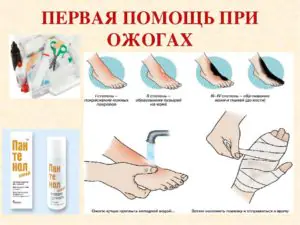
How to treat burns at home
- Stop contact with the scalding factor. Put out the flames on your clothes and move away from the fire. If you are burned by boiling water, immediately remove clothing in contact with the body. Throw a hot object.
- Cool the burnt surface. It is best to do this under running water at a temperature of 10-18 degrees. You can immerse the limb in a container of water or apply a damp cloth. You need to cool for 5 to 10 minutes; in case of a chemical burn, rinse with running water for up to 20 minutes (except for burns with quicklime). Cooling has an analgesic effect and also prevents the spread of heating of healthy tissue at the border of the burn.
- Anesthesia. For severe pain, you can take paracetamol, ibuprofen, ketanov, analgin, and other analgesics.
- Local treatment. The main goal in treating burns is to protect the surface from germs, relieve pain and speed up the restoration of the damaged layer of skin. They simply use sterile wipes, special wipes for burns, sprays and ointments that promote healing.
- General treatment. It would be a good idea to take restorative medications and also follow a proper diet to ensure that the burn heals faster and without consequences. It is recommended to increase the amount of protein in the diet (meat, fish, dairy products), as well as vegetables and fruits rich in vitamins. Additionally, you can take vitamin C and Aevit. It is recommended to drink more.
Pharmacy drugs
So, you got a burn from boiling water or oil. They cooled it down, assessed that it was small and shallow, its condition was generally satisfactory, and it could be treated at home. It's worth looking into the first aid kit. Those who are prudent and thrifty may at least have a package of sterile wipes and Panthenol.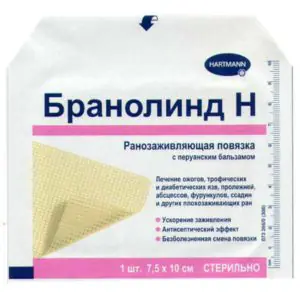
What can you ask at the pharmacy?
- Sterile wipes. Better atraumatic dressings that do not stick to the wound and have antiseptic properties:
- Atrauman Ag (5cm x 5cm 250 rub, 10 cm x 10 cm 530 rub),
- Branolind N (30 rub - 100 rub),
- Combixin and Diosept (manufacturer: Belarus).

There is no need to buy everything at once; to treat minor burns, sometimes one sterile bandage lightly moistened with an antiseptic and Panthenol is enough. In a healthy person, everything will heal without the use of additional funds. If there are no sterile bandages, you can iron a clean cloth with a hot iron.
How long will it take to heal?
Superficial 1st degree burn injuries heal without consequences in 3-4 days. A slight pigmentation may remain, which will also disappear over time.
Second degree burns with blisters will take longer to heal. The bubble gradually subsides, the liquid resolves. It may happen that the bubble bursts with the formation of erosion; this requires additional treatment with antibacterial ointments Levomekol (130 rub) or Voskopran bandage with levomekol ointment (5 x 75, cm 350 rub, 10x10 cm 1100 rub), Silvacin, Dioxyzol. The bandage needs to be changed every other day. Such a burn heals within 10-12 days, also without scar formation.
If, during the treatment, redness, swelling, pain increases, and purulent discharge from the wound appears, this is evidence of infection and a reason to consult a doctor.
What not to do and why
- Lubricate the burn site with vegetable or butter, kefir, sour cream, creams, ointments. Fat forms a film on the wound, which will make it worse for cooling.
- Treat the wound with alcohol, brilliant green, and potassium permanganate. These are irritants and can only worsen tissue damage.
- Treat damage with vinegar or soda. The reason is the same.
- Tear off clothing stuck to the wound. It is simply cut with scissors around the affected area.
- Apply ice. It can cause severe vasospasm, which will impair blood circulation and increase necrosis.
- Treat with urine. Other than the risk of infection, there is no benefit from this.
- Puncture the blisters yourself. The whole bladder protects the wound from infection. When it is opened, a wound surface is formed, which can fester.
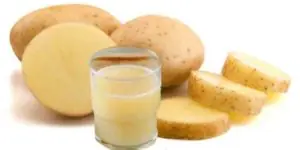
Folk remedies in treatment
There are many tips for treating burns with folk remedies. You shouldn’t trust them all recklessly. But some of them may be useful if the burn is received far from home and away from the first aid kit, or if a person likes to be treated with natural remedies without “any chemicals.”
Many plants are known to have antiseptic properties. The main principle here is “do no harm.” The safest folk remedies:
- Raw potato juice. Grate one medium potato, put the pulp in gauze and apply to the burned area for 10-15 minutes.
- Carrot lotion. Instead of potatoes, raw carrots are grated and used in the same way as in the previous recipe.
- Brew black or green tea with boiling water, cool to room temperature, soak a napkin in the brew and apply to the burn.
- Ointment with calendula. Brew 3 tablespoons of dry calendula with boiling water, let it brew for 15 minutes, strain. Mix the resulting infusion with Vaseline in a ratio of 1:2. Apply 2 times a day to the burned surface. Keep refrigerated.
- Pour boiling water over dried linden flowers (1 tablespoon per glass of water). Leave for about an hour, strain. Apply 2-3 times a day until dry.
- Using the same principle, you can prepare a decoction from any herb or mixture of herbs that have an anti-inflammatory effect: chamomile, calendula, sage, string, plantain.

An infection can enter the body through parts of the skin damaged by a burn. If the burn becomes inflamed, you must immediately go to the doctor and get tested.
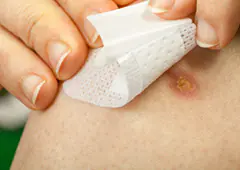
The speed of healing of wounds, including burns, depends on the level of immunity.
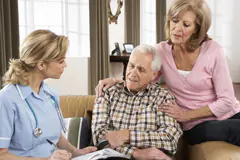
You don’t have to go to the hospital to get tested, have an ultrasound and an ECG. You can undergo these procedures at home.

Don't procrastinate when it comes to your health. Medical examination close to home without queues or overpayments!
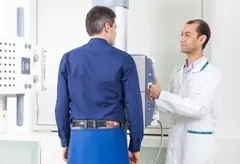
Radiography at affordable prices using the most modern equipment.
A burn, or damage to the skin caused by high temperatures or contact with a caustic chemical, is one of the most common injuries. Children are especially often burned. It is very important to know the basic rules of first aid and to have a suitable effective remedy for treatment after burns in your home medicine cabinet.
Treatment methods and the healing process of burns will directly depend on the degree, area and depth of damage to the skin.
Treatment after burns
There are four main degrees of burn injuries:
- With a first degree burn, damage occurs to the epidermis, that is, the surface of the skin. After a burn, slight swelling and redness of the skin is observed. As a rule, such a burn goes away within two to three days, leaving no traces.
- With a second degree burn, blisters form. With proper treatment and the use of adequate therapy and remedies after burns, healing is possible within ten to twelve days.
- A more serious, third degree burn is characterized by tissue necrosis. In this case, a dry crust, the so-called scab, forms over the wound. In case of a third degree burn A, the epithelial cells of the skin are partially preserved, which contributes to the process of self-healing of the wound. And with a third degree burn B, all the skin dies, and the wound heals very slowly.
- A fourth degree burn is accompanied by charring of the skin and deep damage to the muscles, subcutaneous tissues and bones. In case of severe burns and a large area of damage, urgent hospitalization is necessary.
For small lesions, correctly provided first aid is of particular importance for rapid tissue healing.
First of all, it is necessary to eliminate the cause of the burn as soon as possible by stopping the exposure of the skin to fire or temperature. Cool the affected area by placing it in cold water or applying dry ice.
When providing first aid, you should not immediately apply ointments or creams after burns to the damaged tissue; you must first clean the undamaged surface around the affected area using ether and then alcohol.
An isotonic sodium chloride solution is usually used to remove dead tissue from a wound. If first aid is provided in a timely manner, the skin damaged as a result of a burn will heal much faster.
Skin restoration after a burn
At the stage of skin restoration, the main tasks are healing and disinfection. Often, immediately after a burn, a blister appears on the skin containing a clear liquid - plasma, which seeps through the damaged tissue.
If blisters after a burn are treated correctly, inflammation and suppuration can be avoided, and a new layer of skin will begin to form under the blister, and after one or two weeks the damaged area will dry out and separate. In place of the blister, as a rule, there remains a light pink spot - new young skin. The skin after a burn is very tender and sensitive; at this stage, to speed up its regeneration, it is recommended to use various ointments, creams and gels. They help restore damaged tissue and remove burn marks.
In case of unfavorable development of events, an infection may develop in the damaged area of the skin, then inflammation and suppuration of the blister occurs. The inflammatory process leads to increased temperature, chills, weakness, and recovery after a burn becomes longer. The resulting infection can lead to scarring and burn scars. If this happens, you should immediately consult a doctor who will prescribe tests. With their help, it will be found out what the cause of inflammation is.
Treatment of scars after burns
Scars that form where the skin is broken can become inflamed, often leading to the formation of a keloid scar that protrudes above the skin. The formation of a keloid scar is most often accompanied by itching and burning. Most often, large scars from burns are treated surgically. A burn scar is removed by excision of the scar followed by a cosmetic suture. Then, after the sutures are removed, the new scar is treated with special medications that prevent tissue growth.
Burn scars can also be treated with laser resurfacing. For less serious cases, a so-called chemical peel using fruit acids is used. In addition, it is recommended to use creams that contain active regenerating components.
Remedies for burns
Drugs used for treatment after burns at different stages come in several types - sprays, creams, ointments, gels and dressings.
Thus, ointments, for example Levomekol, are most often used to treat thermal burns. This medicine heals the wound and has bactericidal properties. In addition, it contains an analgesic component, which helps relieve pain in the first days of wound healing.
Povidone-iodine ointment contains active iodine, which disinfects the wound, as well as drugs that accelerate the process of tissue regeneration. The well-known balm “Rescuer” has a similar effect, made from natural ingredients without the use of hormonal and antibiotic agents, which actively restores the protective properties of damaged skin. Also, to avoid infection and speedy healing of the skin after a burn, Levomekol and Panthenol ointments are traditionally used.
In addition to ointments, another effective remedy for burns is cream. As a rule, it is used at the stage of restoration of damaged tissue, to prevent the formation of scars and scars. For sun and thermal burns, Panthenol cream foam can be used. Its action is similar to that of an ointment, but the cream, compared to the ointment, has a lighter texture and is more easily absorbed into the skin.
In case of serious damage, when contact with the wound causes severe pain, it is recommended to use sprays. They are easily sprayed onto the affected surface, avoiding additional contact with the painful area of skin.
Another means for treating skin after burns is various anti-burn dressings. They are impregnated with a special composition that relieves pain and has an antiseptic effect.
Gels are also an effective remedy for burns. Among such means we can note “Ozhogov.Net”, “Apollo”. These gels combine the functions of an antiseptic for the initial treatment of a wound, a healing ointment and a local anesthetic. According to experiments, gels promote faster cleansing of wounds from necrotic tissue, preventing the development of the inflammatory process and suppuration, thereby preventing the formation of scars and scars.
Where to go for burn injuries?
As we have already said, even mild burns do not always respond to effective home treatment. Despite the fact that there are a number of well-known over-the-counter anti-burn medications, their use can have the opposite of the desired result - inflammation or suppuration occurs. In this case, you should contact a therapist who, based on the test results, will develop a course of treatment using special means. There are also frequent cases of allergic reactions to creams and ointments, especially if they are used excessively. It is better to undergo tests prescribed by a doctor in specialized medical laboratories. For example, the INVITRO network of centers offers a wide range of different diagnostic services. Here you can quickly and easily take tests, quickly receive their results and not delay treatment.
Of course, it is better to prevent traumatic situations. However, if you have already received a burn, even a small one, it is better to go to the emergency room or the nearest clinic, where they will be able to give you more correct advice than you will find on the Internet or among friends. So, for example, vegetable or sea buckthorn oil, which is often recommended by everyone, is completely unacceptable to use immediately after damage occurs. Also, your first aid kit should always have a proven cream or gel for burns, for example, Panthenol.



